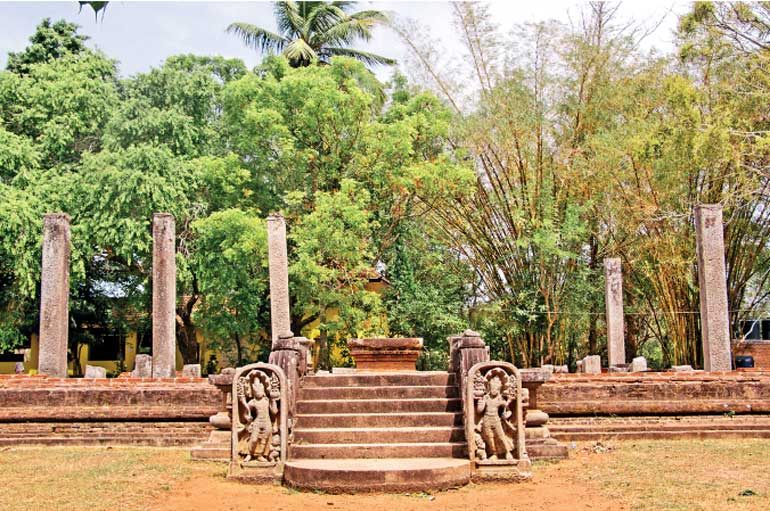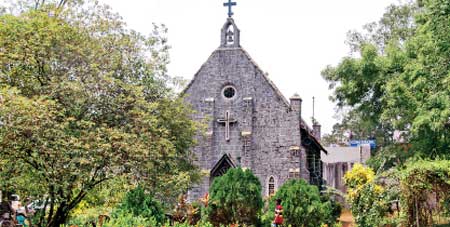Friday Mar 28, 2025
Friday Mar 28, 2025
Saturday, 19 August 2017 00:55 - - {{hitsCtrl.values.hits}}
 By Aysha Maryam Cassim
By Aysha Maryam Cassim
Today, Vavuniya bustles with commerce and a vibrant network of community. New institutions of governance, civil societies and international organisations are actively engaged in the development and reconciliation of the district.
In contrast to the other agriculture-based villages in Northern Province, Vavuniya has a booming political economy that thrives as the main trading city in the entire region. It’s rapidly developing, opening up so many possibilities for the youth.
The Vavuniya District is bordered from the east by Anuradhapura District, west by Mannar District, north by Mullaitivu District and south by Anuradhapura District.
Last Sunday, I decided to make a day trip to Vavuniya from Kurunegala. It took me around three-and-a-half hours by car to reach the gateway to northern Sri Lanka via the A9. You’d rarely see local travellers or tourists stop in Vavuniya these days. Apart from a few cultural attractions, the city abounds with stories and scars of people that need to be heard and seen.
Vavuniya during the war
“Vavuniya was one of the few Tamil towns in Sri Lanka where life had a semblance of normality” – ‘Sri Lanka, Voices from a War Zone’ by Nirupama Subramanian.
Vavuniya held a strategically important position in the history of Sri Lankan ethnic conflict. Everybody called Vavuniya a frontier, sandwiched between the battle between two zones. Five km north of Vavuniya is a village called Thundikulam, where troops used to guard at checkpoints during the war. The region that lay south of Thundikulam was referred to as “The South”.
Vavuniya used to be Government’s last main outpost in the northern mainland until the final military defeat. At times it was used as a launch pad to carry out important military operations. Vavuniya was the closest journalists could get to the conflict zone and people affected by it.

Geographically, it was located on the boundary of the heart of war zone, neutral and with no hindrance by an excessive degree of militarisation. People could cross borders from militant north to south via a rigorous pass system, implemented by the Government. Not having a permit could put you in jail under Emergency laws that existed from 1995-2009.
When the war erupted in Sri Lanka three decades ago, scores of displaced people fled towards Vavuniya from LTTE-controlled Mainland in Jaffna. They believed that they could lead a simple and safe life in the Government-administered Sri Lanka. Many of the displaced settled in Vavuniya and called it their home.
The exodus from Jaffna and other war-torn areas in the early ’80s resulted in major land use changes in the urban areas of Vavuniya District from 1982 to 2012. At present, Vavuniya is considered a densely populated town in the Northern Province of Sri Lanka with a population of 194,158 (Statistical Information of 2011 – Vavuniya District Secretariat.)
Welcome to Vavuniya
Vavuniya connects Colombo to the Jaffna Peninsula by rail and road. It’s a transport hub where the famous A9 highway and the railway line from Colombo Fort to Kankesanthurai and the railway line from Colombo Fort to Talaimannar pass through. Before 2009, sprawling military bases would announce the arrival of Vavuniya and the road conditions beyond the getaway were untarred or mostly impassable gravel lanes, full of indents caused by savages of war and monsoons.
The Yal Devi attack in 1985 suspended the north-south rail transport by 1990. Until 2009, the railway service in Sri Lanka was limited to Vavuniya due to the terrorist activities in the region. After the conflict was successfully ended in May 2009, the Yal Devi recommenced its journey towards Thandikulam on 6 June 2009. Today, north and south bound travellers can easily book a Night Mail Express, Yal Devi, Uttara Devi or an intercity train to reach their destination in less than eight hours.
People, places and culture
The golden domes and turquoise minarets of Vavuniya’s Grand Mosque loom large over the city centre. The picturesque St. Anthony’s Church next to the market is another landmark in Vavuniya that should not be missed.
With a dominant Tamil regional majority, Vavuniya boasts a mixed ethnic demography. Multiculturalism among the community permeates everywhere in the city’s landscape and architecture. There are kovils, mosques, Buddhist temples and churches next to each other, symbolising Vavuniya’s religious and ethnic harmony.
Kudiyiruppu Pillaiyar Kovil is a beautiful temple situated by a waterfront. Surrounding this Hindu kovil is a spacious land that exudes serenity and tranquillity. It’s the perfect ambience for peace loving souls who would love to engage in a moment of meditation.
On a Sunday in August, I was fortunate enough to witness the ‘Ther Thiruvizha’ (Festival of the Chariot) conducted by the Pillaiyar Kovil in Vavuniya. The religious procession went across the city, accompanied by colourfully-attired devotees, chanting hymns.
Kandasamy Kovil in Vavuniya will steal your attention towards it colossus Gopuram and the gold-clad shrine in its sanctum. The Gateway tower aka Gopuram of this kovil is meticulously adorned with ornate stone carvings. There is a reception hall adjoining the temple, which can be easily accessed from the main road.
Madukanda Shri Dalada Viharaya is a Buddhist temple, which can be found along the Kebithigollewa road, approximately fourn km off Vavuniya town. Vavuniya Madukanda Viharaya is one of few Buddhist temples and sites of the north belonging to the pre-Christian era up to the 7th Century AD.
Historically, the temple premises is reputedly recognised as the fourth resting point in the journey of the Sacred Tooth Relic from Mullaitivu to Anuradhapura during the reign of King Keerthi Shri Megha Warna. Folklore tells us that Madukanda village was the birthplace of Nandimitra who was the earlier giant (General) with King Elara and subsequently turned towards King Dutugemunu.
Madukanda Vihiraya is closely knitted to the life of Sinhalese living in nearby villages. The viharaya also functions as a learning centre for Buddhist monks and students, offering educational and spiritual guidance.
The Archaeological Museum in Vavuniya is a must visit. The museum, which is, located just in front of the St. Anthony’s Church, houses a collection of antiques that date back to the 4th and 5th centuries.
The Samadhi Buddha Statue in the central hexagonal chamber of the museum had been found in the Etambagaskada Monastery Complex. The collection of terracotta statues aka Bali Roopa was unearthed from Settikulama. These pinched-faced clay figures appeared to have been used in black magic in the 10-15 century. The God Ganesh image was found from Mannar District.
Surprisingly, the museum was open on a Sunday and the guides were extremely helpful and knowledgeable.

